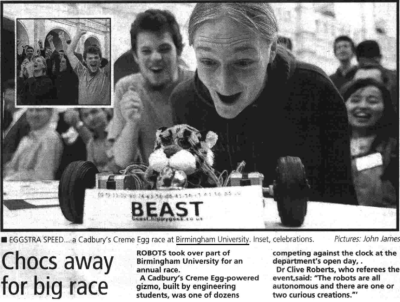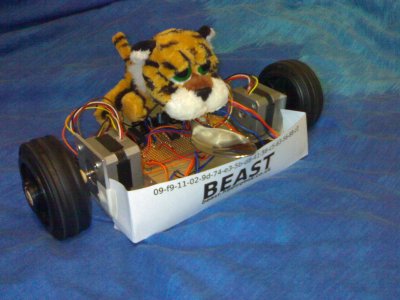In this blog entry, I'd like to address Bob Sutor (of IBM)'s three blog posts about his requirements for a perfect 3D World, implemented as a direct extension to the World Wide Web, as described in my 3D Web design concept.
A pure offline Mode
I think this is part of a wider requirement for certain web applications to work offline. With the recently announced Google Gears and other projects from major industry players like Adobe's Apollo, Mozilla's Firefox 3 (and Parakey, currently vapourware), Django's Offline Toolkit, Microsoft's Silverlight and Joyent's Slingshot I think this is going to become an extremely hot topic. I think we're going to see the boundary between web server and web user agent blur considerably into "Web Servents". So in short, an offline mode can use the same technology as an online 3D web, with a local server or a local cache of data, logic and presentation.
A peer-to-peer model
By using web technology, we can take this for granted to the extent that anyone can run their own 3D web server and we can make hyperlinks between them. The peer to peer idea could be taken a lot further than this though, by users in the same virtual space swarming the data between each other. I don't know about that bit.
A model of many planets
Again, this is basically what the web is.
Much better zoning
This almost touches on the contraversial subject of the .xxx domain.
However, with Second Life the geography works in much the same way as First Life with blocks of land having permenant neighbours. This is a limitation of real physical space that while it might be nice to reflect in virtual worlds, is not necessary. We could have lots of areas of "virtual land" who's boundaries are defined only by their own content and then have portals (hyperlinks) which allow you to move into another space, there is no reason to have permenant neighbours because your neighbours are simply whatever you link to, which is under your control. In this way zoning just becomes a result of the links people make, which works reasonably well on the current web.
If you do want to build a planet with geography like the real world (like Second Life), you can still do so, but you could decide to ban certain activities in that particular planet. That way, if there's some content you don't like you simply don't link to it, and it is only as close as 6 degrees of separation dictate.
In-world Secure Chat
I would argue that secure chat in general isn't particularly widespread on the Internet yet, so this is an issue for the Internet in general. However, see later for more discussion on in-world chat. In short, XMPP encryption extensions.
AI
This would just be part of a web application. A 3D web application that is a 3D game may have AI controlling faux avatars and objects, a sales site may have an AI shop assistant or human-AI hybrid. Server side scripting languages and javaScript manipulating X3D files.
World-to-world communication
XMPP (Jabber) and either Jingle or SIP for voice (and video?) would be great for person to person chat. A couple of interesting points spring to mind:
Firstly, should the jabber client be part of the 3D Web user agent or should it just be another web interface like Google Talk in GMail? Especially with regards to advertising prescense or status of the user (available, away, busy, offline).
Secondly, how do we deal with the issue of hearing people around you in a virtual space and adjusting the sound as people move, in addition to person-to-person conversation between worlds. We certainly don't have standards for this yet so it wil be interesting to watch Linden Labs.
World to world teleportation
Hyperlinks.
Do I need a membership in the other world or is there a notion of guest?
We have the same issue on the web. I think distributed authentication like OpenID is a giant leap forward in this field.
How do I deal with cross-world identity?
By using a URI as a person's identity as in OpenID. You can still have your friendly screename in Jabber, but the URI uniquely identifies you.
Can I bring my money with me?
That's a good question, but I think the answer is that if you want some kind of virtual currency, it simply becomes a service like PayPal where you buy credits of some kind and they sort out "exchange rates". You could then use that currency in any world or any web site by using that service as a broker for payments. I'm obviously making this sound a lot more simple than it really is, nothing is straight forward where money is involved.
Can I bring my clothes with me?
Yes, your avatar and everything your avatar wears is hosted on an avatar server (just an 3D web server) and can simply be included into a scene. This only works if all the worlds use the X3D (or other) standard, which is one of the fundamental requirements of a 3D web in my opinion.
Can I bring more general objects between worlds?
The same as above, "objects" can be an X3D file hosted somewhere on the web which can be included into another X3D file dynamically. This requires a certain level of write access to all 3D web servers, which is probably going to cause all sorts of spam problems like we have on wikis. (Imagine a spamming company putting up billboards everywhere).
Search
Don't worry, Google will sort that out ;). Seriously though, it could work the same way as the web with spiders and giant indexes.
Device and world compatible link redirection
Now that is a very interesting topic which you could call the Device Independent or Multimodal Web. I think this can be solved with HTTP Accept headers and content negotiation. This is a major part of what my Webscope project is about, a Multimodal Web User Agent.







